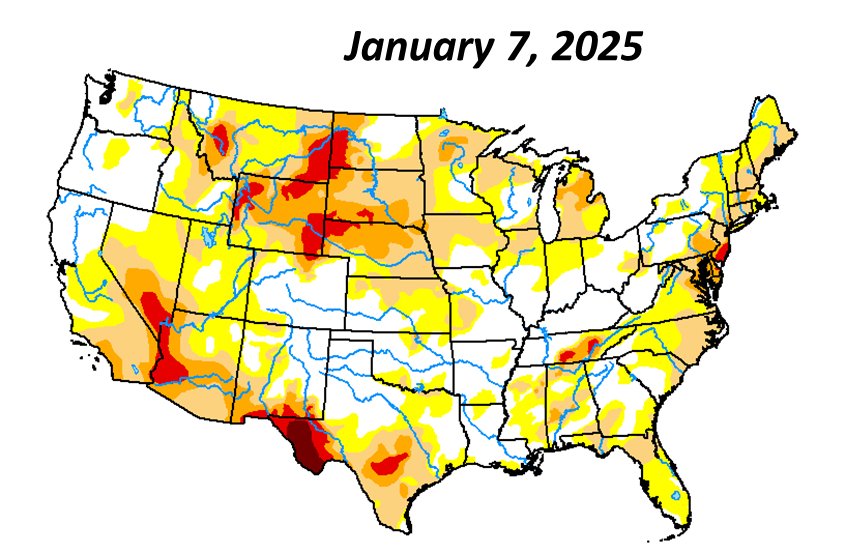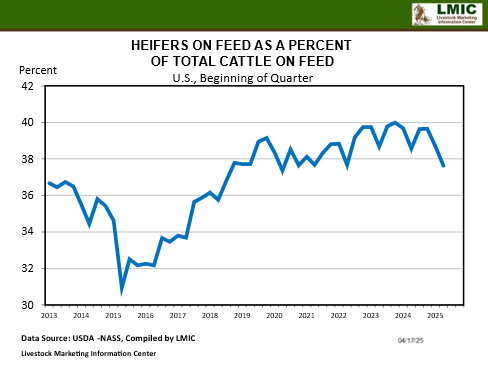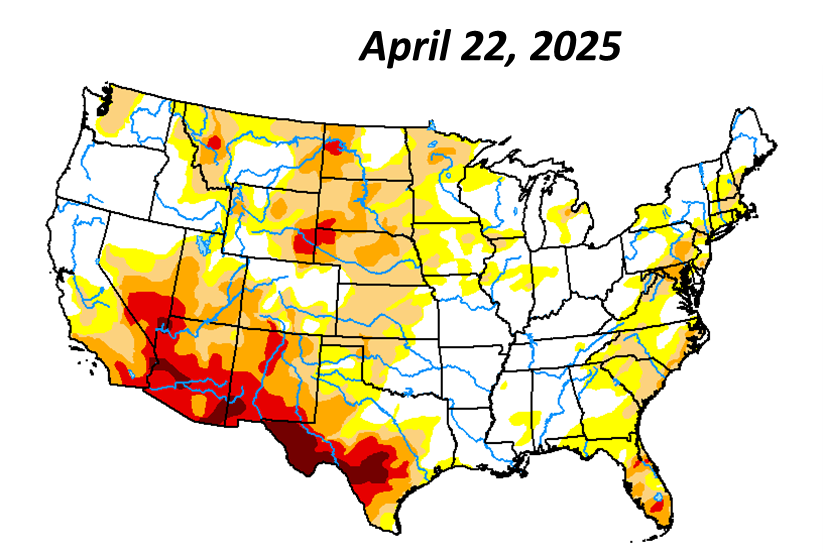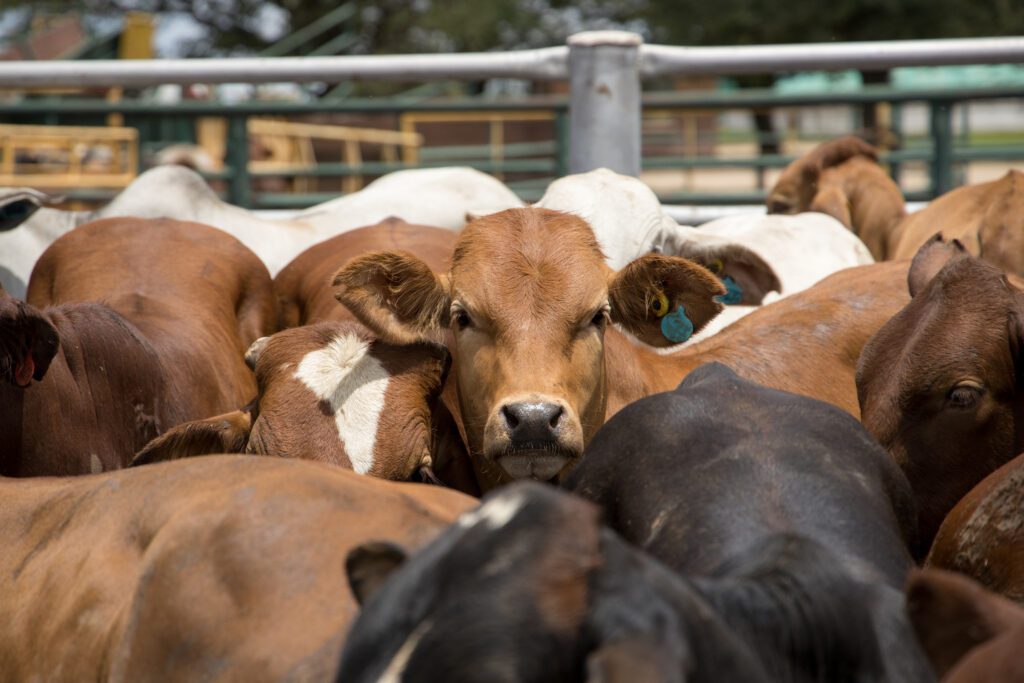by HANNAH BAKER, UF/IFAS
Every month, USDA-NASS releases the Cattle on Feed Report indicating how many cattle are on feed, how many have been placed, and how many have been marketed. The April report showed that cattle and calves on feed in feedlots with a capacity of 1,000 head or more totaled at 11.6 million, down 1.6 percent year over year. Placements were 5 percent above 2024 with marketings 1 percent higher. All reported numbers were within the range of pre-report estimates. So far in 2025, 5.2 million head have been placed in feedlots, 216,000 head fewer (4 percent) compared to the same time frame last year. It is worth noting that imports of feeder cattle from Mexico have been fewer compared to historic numbers due to the shutdown of imports through January and have been slowly recovering since February. Regardless though, tight cattle supplies in the U.S. will steadily influence the total number of cattle placed on feed in 2025, supporting high prices for feeder cattle.
In addition to tight feeder cattle supplies supporting high prices, the eventual retention of heifers will bolster prices as fewer heifers are sold as feeders and are retained as replacements. Every quarter, the Cattle on Feed report separates out the number heifers and the number of steers on feed. The April quarterly report indicated that 4.38 million heifers were on feed, 37.6 percent of all cattle on feed. This is a decline of 3.7 percent since last year and a decline of 4.2 percent since January. While this may be a small sign of heifer retention being a thought among producers, it is still not a large enough decrease to indicate a significant shift. There have been over 4 million heifers on feed consistently each quarter since January 2018. During the last expansion, this percentage was closer to 31-32 percent. The July Cattle on Feed Report will be anticipated to see if this percentage will decline even further during the second quarter of the year. Additionally, persistent drought conditions are expected going into the summer months in the Southern Plains and across the country. Forage availability will play a role in whether producers are able to start keeping heifers back.



Hannah Baker is a specialized extension agent for beef and forage economics. She can be reached at h.baker@ufl.edu

